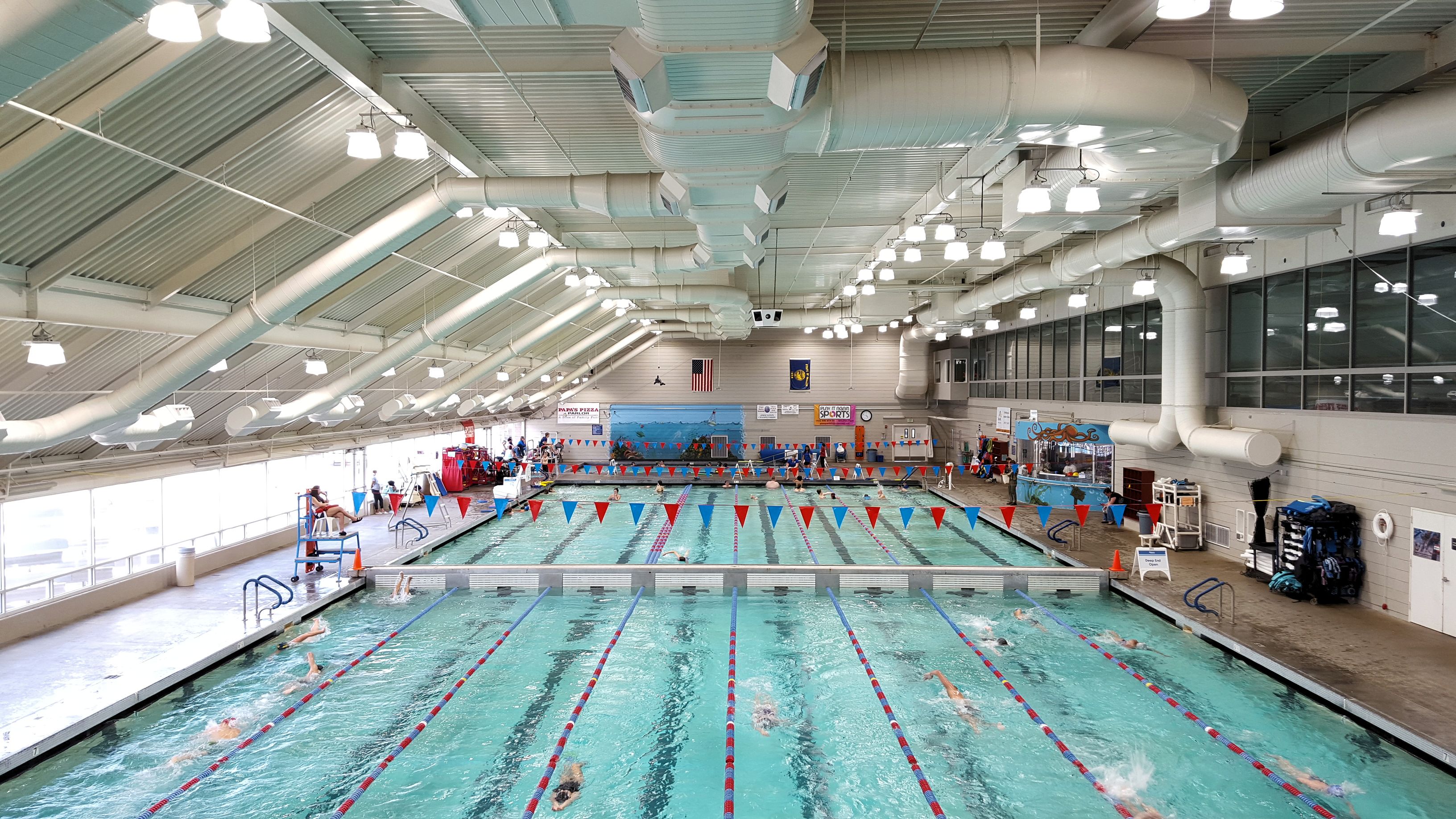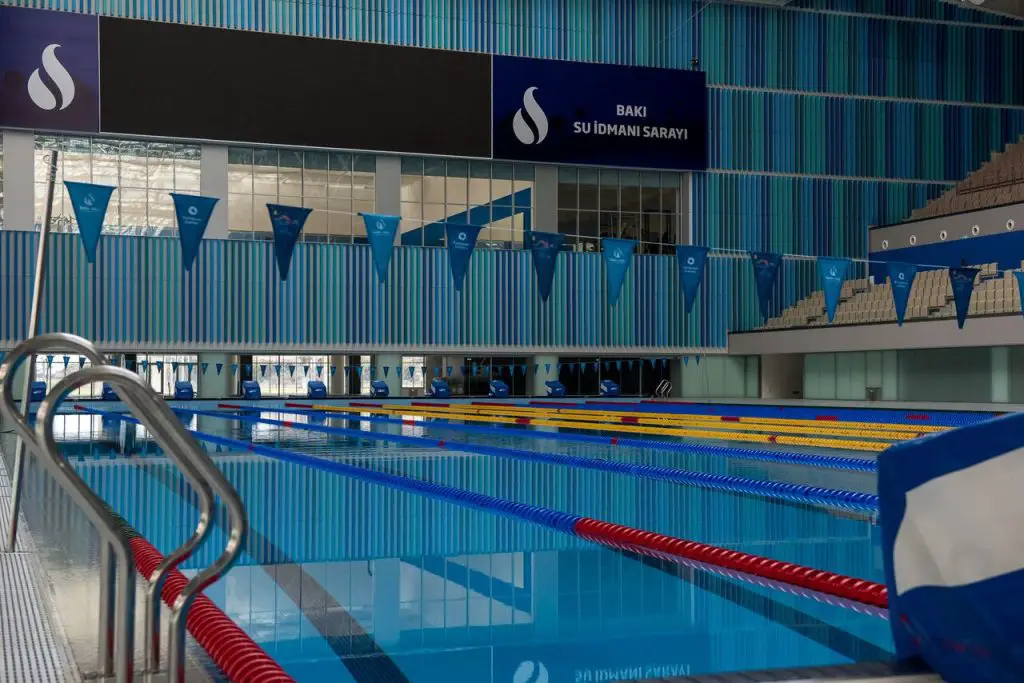An Olympic swimming pool is typically 50 meters long. It is a standard size for competitive swimming.
Olympic swimming pools are designed to meet the specifications set by the International Olympic Committee. Olympic swimming pools, used for competitive swimming, have a standard length of 50 meters. These pools are built according to the guidelines set by the International Olympic Committee, ensuring that athletes around the world can compete on a level playing field.
The length of these pools allows for a true test of speed and endurance, making them suitable for world-class competitions like the Olympic Games. Swimming in an Olympic pool requires exceptional skill and discipline, as athletes strive to break records and reach new heights in the world of swimming. Whether it’s the thrilling butterfly stroke or the intense freestyle race, Olympic swimming pools provide a platform for swimmers to showcase their talent and make a splash on the global stage.
History Of Olympic Swimming Pools
When it comes to the history of Olympic swimming pools, it’s fascinating to delve into the evolution and notable pools that have left a lasting impact on the sport. Let’s explore the origins, evolution, and some of the most noteworthy Olympic swimming pools that have hosted historic competitions.
Origin And Evolution
The origins of Olympic swimming pools date back to the first modern Olympic Games in Athens, Greece in 1896. The swimming events were originally held in open water, with athletes competing in the Bay of Zea. It wasn’t until the 1908 London Olympics that the first purpose-built indoor swimming pool was constructed, marking a significant milestone in the evolution of Olympic swimming pools.
Over the years, advancements in pool design, materials, and technology have played a pivotal role in shaping the modern Olympic swimming pool. The implementation of standard dimensions and features, including lane markers, starting blocks, and electronic timing systems, has contributed to the standardization and fairness of competitions.
Notable Olympic Pools
Several Olympic swimming pools have left a lasting legacy in the world of aquatic sports. The Beijing National Aquatics Center, also known as the “Water Cube,” gained international acclaim for its striking design and innovative use of lightweight materials. This iconic venue hosted the swimming and diving competitions during the 2008 Beijing Olympics, showcasing the pinnacle of modern pool architecture.
Another notable Olympic swimming pool is the Aquatics Centre in London, which served as the main venue for swimming, diving, synchronized swimming, and water polo events during the 2012 Summer Olympics. Known for its distinctive wave-like roof, the facility remains a testament to contemporary architectural and engineering marvels in aquatic sports.
Technical Specifications
The technical specifications of an Olympic swimming pool are crucial in ensuring that it meets the required standards for competitive swimming events. Understanding the specific measurements and dimensions of an Olympic swimming pool provides insight into the uniqueness and complexity of these world-class sporting facilities.
Length And Width
The length of an Olympic swimming pool is 50 meters, while the width is 25 meters. This substantial size allows for multiple lanes which are essential for accommodating competitive swimming races and training sessions simultaneously.
Depth And Volume
The depth of an Olympic swimming pool generally ranges from 2 to 3 meters. The volume of water held within the pool is approximately 2,500,000 liters. This substantial amount of water is necessary for maintaining consistent buoyancy and water conditions for swimmers.
Construction Challenges
Constructing an Olympic swimming pool presents substantial engineering challenges. From precise measurements to strict regulations, every detail must be meticulously planned.
Engineering Feats
Building an Olympic-sized pool requires precise calculations and expert engineering skills. The pool’s dimensions, depth, and materials must adhere to strict standards for competition.
Maintenance Considerations
Ensuring the longevity and functionality of an Olympic swimming pool involves careful maintenance. Regular cleaning, water quality checks, and structural inspections are essential tasks.
Records And Achievements
In the world of Olympic swimming, records and achievements are constantly being broken and set anew. From the fastest times recorded to the most memorable moments, these accomplishments highlight the incredible skill and dedication of the athletes in the pool. Let’s dive into some of the amazing records and achievements in Olympic swimming history.
Fastest Times Recorded
Swimming at the Olympic level requires exceptional speed and endurance. Throughout the years, swimmers have pushed the boundaries of what was once thought possible and have set some astonishingly fast times.
One of the most remarkable records is the world record for the fastest time in the men’s 100-meter freestyle event. This record was set by Cesar Cielo of Brazil in the 2009 World Championships with a time of 46.91 seconds. To put this in perspective, that’s faster than the average time it takes to microwave a bag of popcorn!
Another notable record is held by Katie Ledecky, an American swimmer who established the fastest time in the women’s 800-meter freestyle at the 2016 Rio Olympics. Ledecky completed the distance in an astonishing 8 minutes and 4.79 seconds, more than 11 seconds faster than the second-place finisher.
Memorable Moments
Over the years, Olympic swimming has seen its fair share of memorable moments that have left a lasting mark on the sport.
One such moment was Michael Phelps’ achievement at the 2008 Beijing Olympics, where he won an unprecedented eight gold medals. This feat surpassed the previous record of seven gold medals set by Mark Spitz in 1972. Phelps’ dominance in the pool during those Games was truly awe-inspiring and cemented his place as one of the greatest swimmers of all time.
Another unforgettable moment was the performance of the United States women’s relay team at the 2012 London Olympics. In the 4×100-meter freestyle relay, the team, composed of Missy Franklin, Jessica Hardy, Lia Neal, and Allison Schmitt, set a world record time of 3 minutes and 52.05 seconds. Their combined efforts and exceptional teamwork showcased the power of collaboration in swimming.
These records and achievements serve as a testament to the incredible talent and determination of Olympic swimmers. They inspire future generations of athletes to chase their dreams and push the limits of what is possible in the pool.
Comparative Analysis
When it comes to Olympic swimming pools, there’s no denying that they are a marvel to behold. As we dive deeper into the world of competitive swimming, it’s important to understand how these pools differ from standard recreational pools in terms of size and environmental impact. In this comparative analysis, we will explore the key differences between Olympic swimming pools and standard pools, as well as the environmental factors surrounding these massive aquatic arenas.
Vs. Standard Pools
Olympic swimming pools differ significantly from your typical residential or public recreational pools. Their size and dimensions are carefully regulated to meet the strict standards set by the International Swimming Federation (FINA). While standard pools may vary in size, a standard Olympic swimming pool is 50 meters long, 25 meters wide, and at least 2 meters deep, offering a whopping 2,500 cubic meters of water for competitive swimmers to navigate. This elongated and spacious design allows athletes to reach their maximum potential and showcase their skills on the grandest stage.
Environmental Impact
With their immense size and water capacity, Olympic swimming pools have a notable environmental impact. These pools consume a substantial amount of water for both initial fill-up and maintenance. However, advancements in technology and industry practices have led to innovative solutions that mitigate the environmental footprint of these aquatic giants.
A primary concern with the constant replenishment of water is water waste and subsequent energy use for heating, filtration, and chemical treatments. To combat this, Olympic swimming pools employ advanced filtration systems and water conservation measures. These systems are designed to recycle and recondition water, reducing the consumption of freshwater resources. Additionally, the use of energy-efficient pumps and heating systems minimizes power consumption, further lessening the environmental impact.
In summary, while Olympic swimming pools are undoubtedly larger and consume more resources than standard pools, their impact is being mitigated through technological improvements in water conservation and energy efficiency. These efforts ensure that competitive swimming can be enjoyed on a global scale, while minimizing harm to the environment.
:max_bytes(150000):strip_icc()/RioOlympicsswimmingpool-GettyImages-519838356-59c09963054ad90011cf5247.jpg)
Credit: www.liveabout.com
Influence On Athletes
An Olympic swimming pool is 50 meters long, offering a standard length for competitive swimming events.
Training Advantages
- Optimal length for athletes to practice flip turns and pacing strategies.
- Enhanced endurance due to longer distances covered during training sessions.
Performance Enhancements
- Allows swimmers to refine stroke techniques for better efficiency.
- Promotes consistency in performance by practicing in a standardized pool size.
Global Impact
The global impact of Olympic swimming pools extends beyond their physical dimensions. From their cultural significance to their economic implications, these pools play a pivotal role in shaping societies and economies across the globe.
Cultural Significance
Olympic swimming pools have deep cultural significance, often symbolizing determination, discipline, and excellence. They are revered as arenas where athletes push the boundaries of physical prowess and break new ground in the world of sports. The pools serve as inspiring venues for countless aspiring swimmers, fostering a culture of athleticism and competitive spirit.
Economic Implications
The construction and maintenance of Olympic swimming pools contribute significantly to the economy. Building these pools generates employment opportunities for architects, engineers, construction workers, and various other professionals. Moreover, hosting international swimming competitions in these pools attracts tourism, boosting the local economy through increased revenue from accommodations, dining, and entertainment services.

Credit: www.corvallisoregon.gov
Future Trends
The future of Olympic swimming pool design is an exciting area to explore, with continual advancements and innovations revolutionizing the landscape. From cutting-edge technology to sustainability efforts, the drive for continuous improvement is propelling the sport to new heights. Let’s delve into the future trends shaping the world of Olympic pools.
Innovations In Pool Design
Innovations in pool design are paving the way for enhanced performance and safety. Advancements in construction materials, such as state-of-the-art tiling and UV-resistant polymers, are elevating the durability and longevity of Olympic swimming pools. Furthermore, precision engineering techniques are streamlining pool construction, ensuring optimal dimensions and flow dynamics for swimmers.
Sustainability Efforts
Sustainability efforts are becoming integral to the evolution of Olympic swimming pools. The integration of eco-friendly practices, including solar heating systems and water recycling mechanisms, is significantly reducing the environmental impact of these monumental facilities. Moreover, the incorporation of energy-efficient lighting and filtration systems is driving the overall sustainability of Olympic pool complexes.

Credit: en.wikipedia.org
Conclusion
The Olympic swimming pool is an impressive 50 meters long, meeting stringent competition standards. Hosting some of the world’s most elite athletes, it symbolizes dedication and excellence. Understanding its length adds depth to our appreciation of the athletes’ incredible performances.
Dive into the world of Olympic swimming!





